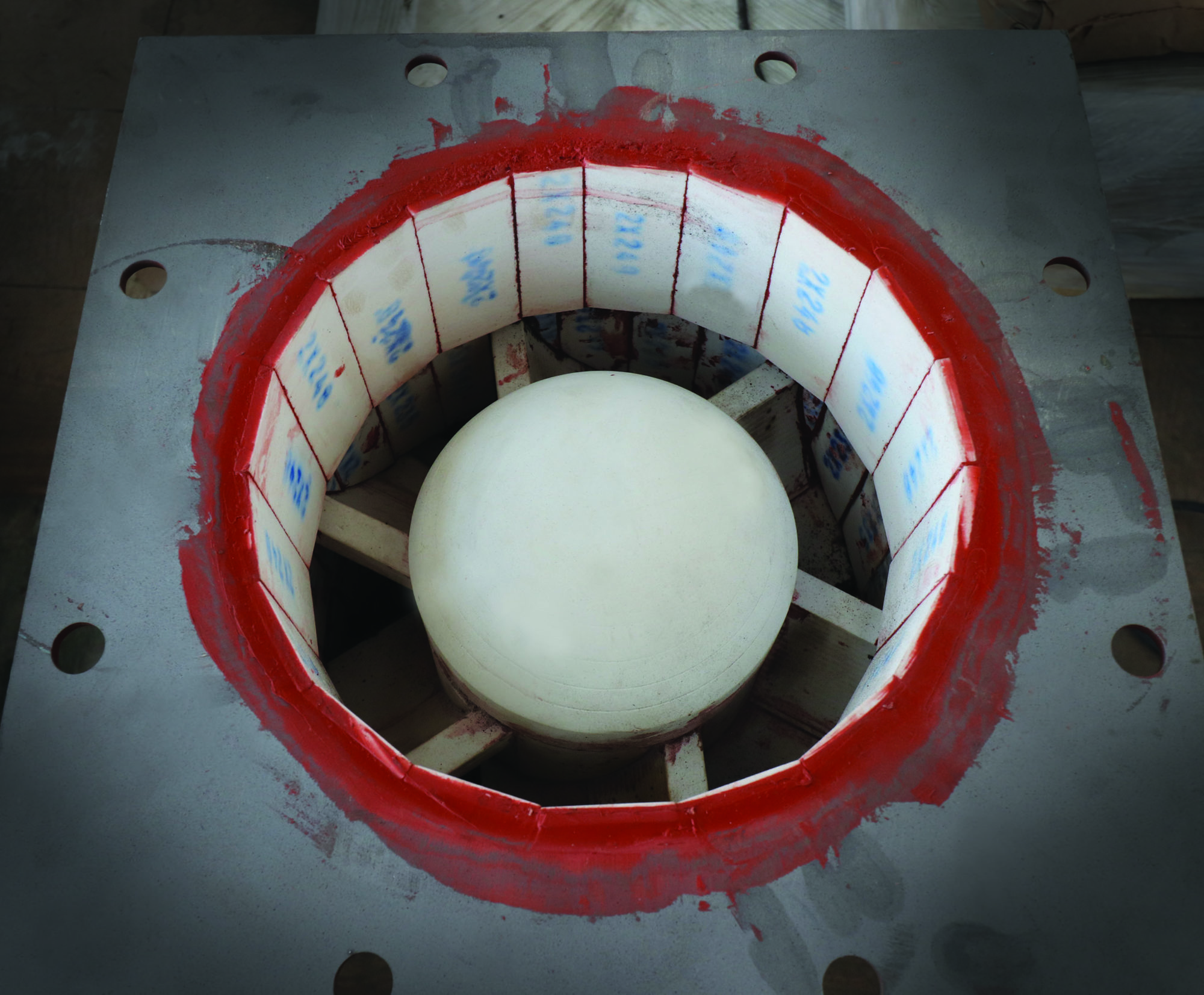A new ceramic-based solution from Multotec has opened the door for a range of componentry to be shaped using pressed alumina ceramics for high wear resistance and longer wear life, the South Africa based company reports.
According to Boyd Butterworth, Sales Engineer at Multotec Wear Linings, the opportunity arose when a chrome smelter in the Steelpoort area of South Africa’s Limpopo province was searching for a more cost-effective solution for certain wear parts in their rotary dryer multi-cyclone arrangement.
“The customer initially required the fabrication and ceramic lining of steel components in the multi-dryer cyclones,” Butterworth says. “The units are employed in the process of drying chromite ore particles and other feed material on its way to the pelletising section of the plant.”
The units are essentially dust cyclones – rather than the process or separation cyclones Multotec supplies – and are subject to aggressive wear. The feed to these multi-dryer cyclones typically consists of chromite ore, reductants such as anthracite, char, coke and coal, and fluxes like quartzite, dolomite and lime.
“The multi-dryer cyclone has four main components, made initially of steel and later lined with ceramics in response to the rapid replacement rate,” Butterworth says. “The wear rate is exacerbated by the high velocity of the material, which is required in order for it to remain in suspension while passing through the system.”
The customer’s eagerness to find a more effective solution allowed Multotec to present an unusual – perhaps unique – concept: solid ceramic components custom-shaped for this specific purpose, the company said.
Butterworth noted that the previous installation of standard ceramic tiles by a competitor did not adequately protect the components from the highly abrasive material which, moving at about 18 m/s, was still leading to frequent component replacements.
“Our proposal was to produce a solid ceramic blade and dome arrangement, as well as to provide the rest of the tube and inlet sections with engineered ceramics, installed at a very high standard,” he says.
Paving the way for this solution was a highly specialised and innovative new fabrication technique that saw the ceramics shaped into various complex and intricate designs while they are in the ‘green phase’ of production, using state-of-the art CNC technology.
“Thanks to this technique, we can produce solid alumina ceramic machine components,” Butterworth says.
The company’s research to date suggests that this might be the first time components like these have been produced from pressed alumina ceramics – making them a pioneering achievement.











